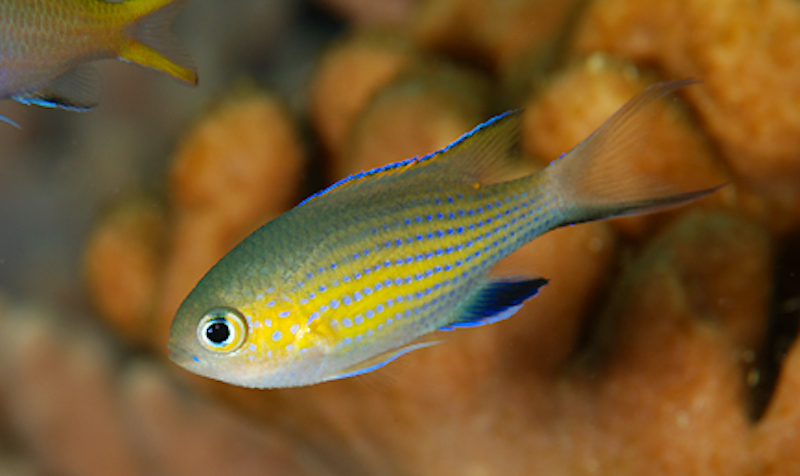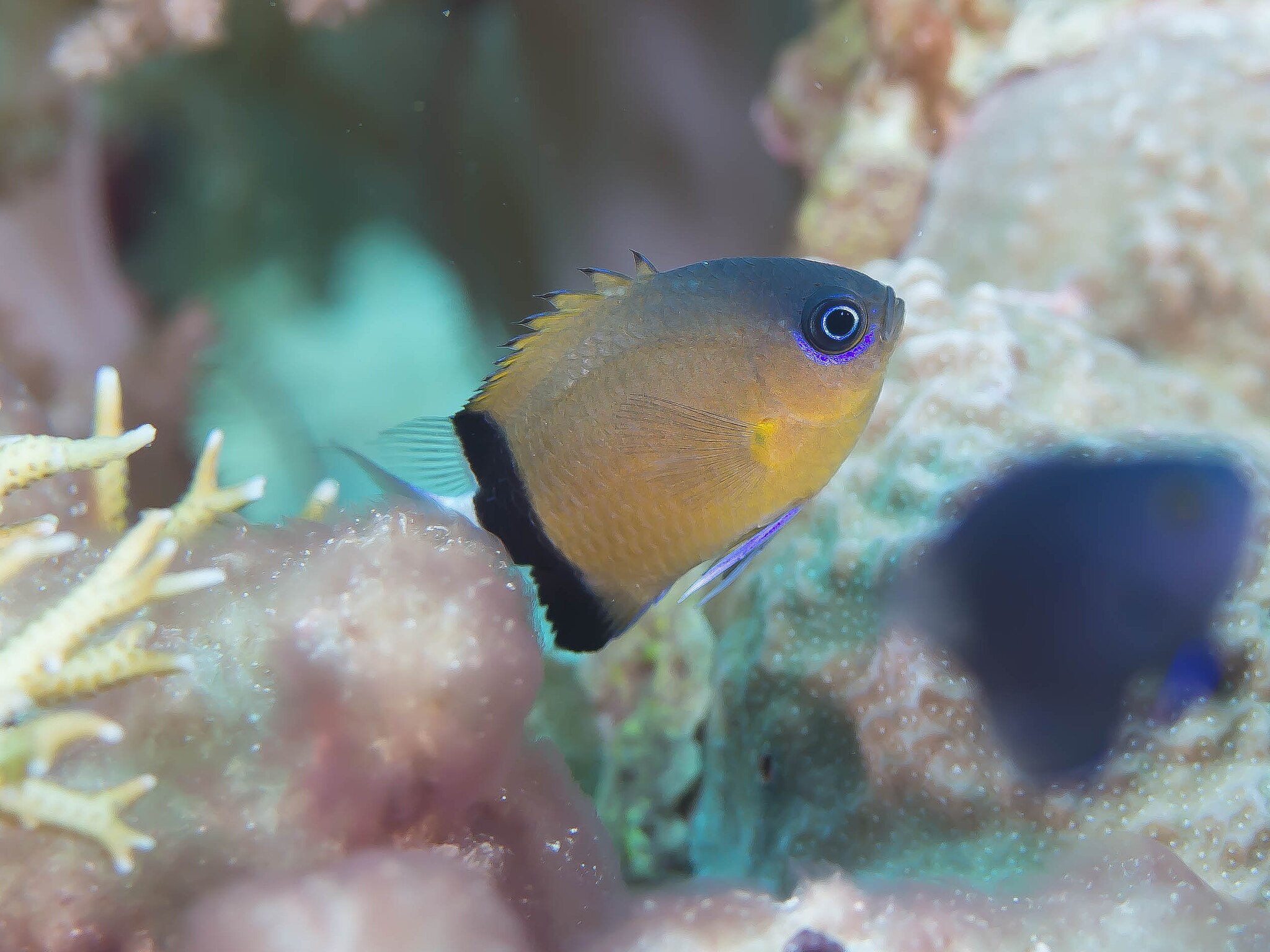Life is short when you’re a reefkeeper, with so many fish, so little time, and so few tanks to keep them in. Here are some alternatives:
Common name: Blue Chromis
Scientific name: Azurina cyanea
Origin: Western Atlantic
Size: 15cm/6″
Blue chromis come from the Western Atlantic, not the Western Pacific Ocean, and have been placed with the genus Azurina instead of Chromis. They are a darker blue than Green Chromis, more elongated, often offered at a larger size, and capable of growing to twice the size of the average chromis species. They don’t form the dense shoals that Green Chromis do and can be kept in lower numbers too, although they do need more space. A must-have species when creating Carribean biotope tanks.

Common name: Bicolor Chromis
Scientific name: Pycnochromis margaritifer
Origin: Western Pacific, Tonga, Fiji
Size: 7cm/3″
Bicolor Chromis are classy looking damselfish with the shape of a Green Chromis but that contrasting black and white coloration. Like Green Chromis, as juveniles, they congregate in large numbers in the wild and dash for cover en-mass whenever they feel threatened. When mature, and kept in low numbers they become more damselfish-like, snapping at each other and becoming territorial to one another. They search out areas of high flow where they can sit in the current, space each other out, and wait for food particles to come to them. Now in the genus Pycnochromis, with Pycnochromis dimidiatus being a similar-looking species.

Common name: Vanderbilt’s chromis
Scientific name: Pycnochromis vandebilti
Origin: Pacific Ocean and East Indian Ocean
Size: 6cm/2.5″
Vanderbilt’s chromis are dainty little damselfish which are prettier when viewed closeup. They are somewhat fragile when first imported so feed often on small zooplankton as well as separating them from any aggressive or territorial fish. They fight amongst themselves if kept in small numbers but are a nice addition to a quiet reef tank and will appeal to those who like to branch out into non-run-of-the-mill genera and species. Now in the genus Pycnochromis.

Common name: Barrier Reef Chromis
Scientific name: Chromis nitida
Origin: Eastern Australia
Size: 8.9cm/3.5″
Barrier Reef Chromis are iconic Great Barrier Reef damselfish and make great additions to large SPS tanks. They are often shipped at a larger size than Green chromis and cost more, but they are classy chromis, they offer a contrasting pattern to the plain green of Green Chromis, and are often the most prized member of the genus by collectors.

Common name: Black bar Chromis
Scientific name: Pycnochromis retrofasciata
Origin: Western Pacific
Size: 6cm/2.5″
If you still love the looks of Dascyllus damsels but need the less boisterous, more compatible nature of a chromis, then these may be the fish for you. They will bicker amongst themselves, space out, and whittle down their own numbers but they usually cease at about three. A smart-looking, easy to keep damselfish for the discerning “Chromis” collector. Now in the genus Pycnochromis.

What’s the best food for Chromis?
Chromis and Pycnochromis are planktivores that need to eat as often as possible throughout the day. They will take foods as small as Copepods and Artemia nauplii up to Artemia, Mysis, and Small Krill. Dry foods will help to round out their nutritional needs and help to keep weight on them. Chromis are less aggressive toward one another when food is constantly available. Place food into an area of high flow where it will remain in suspension for as long as possible.
What are the best tankmates for Chromis?
Chromis make great tankmates for Anthias, which also shoal, eat plankton frequently yet are prone to squabbling amongst themselves. Their diet and temperament also suit Anampses wrasses, Leopard wrasses, Fairy wrasses, or Flasher Wrasses. Avoid other aggressive damselfish or territorial clownfish that will attack them as they try to swim past.
Which species is my Green Chromis?
The Blue/Green Chromis is named Chromis viridis, although there is a nearly identical species called the Black Axil Chromis, Chromis atropectoralis, with the same color, shape, and behavior but a small black spot at the base of its pectoral fins. That’s the only difference at a glance and some reefers may have atropectoralis instead of viridis, or even a mix of both!
Tips on how to keep Chromis
The larger the Chromis the hardier they are, so avoid very small, thin individuals and choose larger, rounder, well-fed chromis that have been rested and quarantined first.
Chromis are vulnerable to Uronema, a protozoan parasite. Quarantine, observe, and medicate in order to avoid spreading it to your reef tank.
When did all Chromis stop being in the genus Chromis?
Chromis was revised in 2021, with some species moving to Azurina and Pycnochromis. The three Pycnochromis featured here are similar to each other in habits and swim lower in the water, and closer to rockwork, than Green chromis. For more info on the revision see below:
Main image credit Rickard Zerpe, CC BY-SA 2.0


